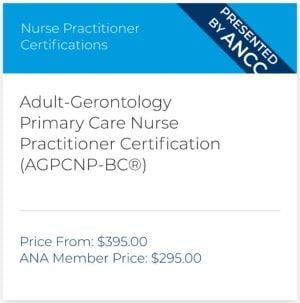Bridging the Gap: Help Nurses' Transition Into Practice
2 min read
Every nurse transitioning between practice settings and roles needs time and support to be successful. The transition from academia to practice can be challenging. Bridging the gap through transition to practice programs, whether residency or fellowship for Registered Nurses (RNs), has been proven to increase confidence and competence in nurses who are transitioning between settings and roles.
In a column in Nursing Center eNews, Sheri Cosme, DNP, RN, NPD-BC, Director Practice Transition Accreditation Program® (PTAP) and Advanced Practice Provider Fellowship Accreditation™ (APPFA) at the American Nurses Credentialing Center (ANCC), details the value of transition to practice programs (i.e. residency or fellowships) and current discussion around the issue around transition to practice. Both RNs and APRNs can benefit from such programs. Cosme calls for the profession to embrace and offer the same support system for RNs and APRNs moving into clinical settings or between different clinical settings through accredited transition to practice programs. The full article can be read here.
In an environment of new technologies, unfamiliar new workplaces, and the pressure of a highly acute patient populations, nurses must be supported with adequate preparation and guidance. Other healthcare professions such as medicine and pharmacy depend on accredited residency and fellowship programs. Why can’t nursing do the same and raise the bar and accredit transition to practice programs?

ANCC's Practice Transition Accreditation Program® (PTAP)
ANCC's Practice Transition Accreditation Program® (PTAP) offers an evidence-based roadmap to managing this issue. The ANCC launched PTAP in 2014. This program has quickly become the global standard for transition to practice programs that transition RNs and APRNs into new practice settings with 255 accredited programs in 856 health care settings (as of February 14, 2024). ANCC accredits two types of transition to practice programs for types of all practice settings. ANCC PTAP accreditation also helps satisfy a Magnet® standard, Structural Empowerment 9.
ANCC's PTAP accreditation features:
- A peer review process
- Integration of national competencies
- Evidence-based criteria
- Meets the Institute of Medicine's (IOM) Future of Nursing 2010 recommendation #3
- A framework for transitioning RNs
ANCC PTAP offers free resources and guidance for creating and evaluating nurse residency and fellowship programs that are available here. To determine whether your program is ready for accreditation you can perform a self-assessment. A gap analysis tool helps show how well your program aligns with the ANCC PTAP criteria and identifies areas where you can adjust or improve. Download PTAP's Getting Started Guide to see where your program aligns with ANCC PTAP criteria.
Images sourced from Getty Images


